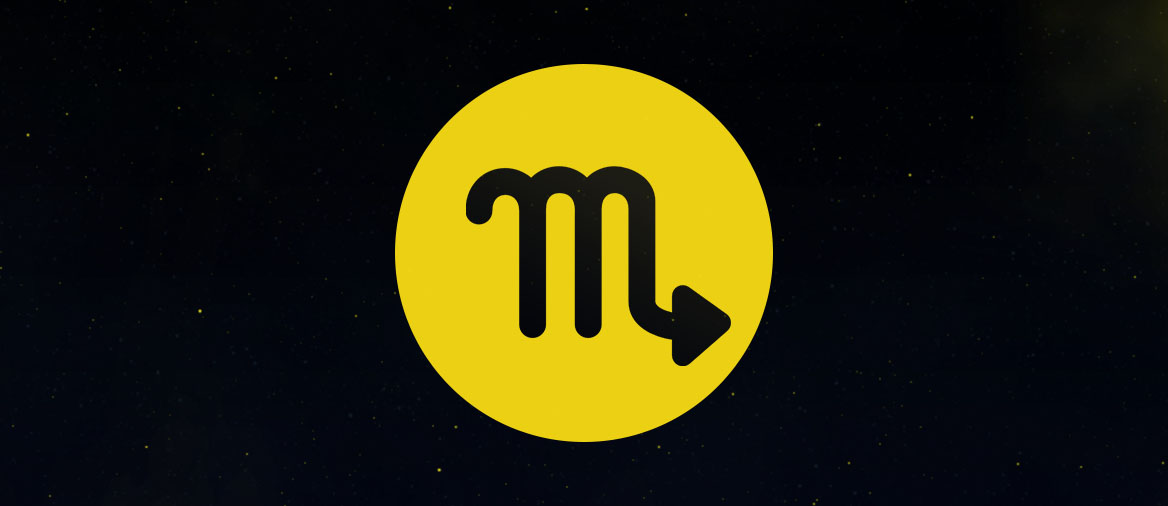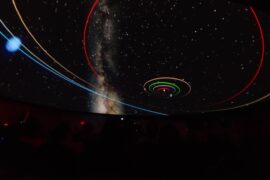Learning to find constellations in the night sky is a really fun and rewarding learning experience.
Scorpius, also known as the scorpion can be a tricky zodiac constellation to find because of its position in the sky, but don’t worry, we have a great, easy-to-learn method that will help you locate it fast.
There are a few reasons why Scorpius can be hard to find.
- Its neighbors, Libra, Saggitarius, and Ophiucus don’t have many distinguishable features. In astronomy, sometimes you use the close by constellations as guidance to find your way.
- Besides Antares, its brightest star, Scorpius doesn’t have that many recognizable stars
- It can be easily confused with the constellation of Serpens which is nearby.
When is the Scorpius constellation visible in the sky
Scorpius can be seen about three quarters of the year, from January to September, but the best time to watch it in the Northern Hemisphere is July when it can be found overhead at around 9:00 PM.
From October to December, Scorpius moves is positioned behind the Sun, making it impossible for us to see it at night from Earth.
The following table will tell you the times at which this constellation can be seen for each month.
| Month | Visible | Not visible |
|---|---|---|
| January | 5:00 AM to sunrise | sunset to 5:00 AM |
| February | 3:00 AM to sunrise | sunset to 3:00 AM |
| March | 1:00 AM to sunrise | sunset to 1:00 AM |
| April | 00:00 AM to sunrise | sunset to 00:00 AM |
| May | 10:00 PM to sunrise | sunset to 10:00 PM |
| June | Sunset to 3:00 AM | 3:00 AM to sunrise |
| July | Sunset to 1:00 AM | 1:00 AM to sunrise |
| August | Sunset to 11:00 PM | 11:00 PM to sunrise |
| September | Sunset to 9:00 PM | 9:00 PM to sunrise |
| October | not visible | not visible |
| November | not visible | not visible |
| December | not visible | not visible |
By following this table you can also estimate the general area where the constellation can be found. Remember that just like the Sun and the Moon, constellations also rise in the East and set in the West.
From where is Scorpius visible?
Scorpius is located in the SQ3 quadrant of the sky, which means it is slightly easier to watch it from the southern hemisphere. To be more precise, it can be seen from latitudes between +40° to -90° which means it can still be seen in most of the U.S. and certain areas of southern Europe, but you will not be able to find it if you are in Canada or the UK.
How to find the Scorpius constellation
Scorpius can be seen without the help of a telescope, but it will be a lot easier to find under the right conditions.
Areas with high light pollution like big cities are not ideal for stargazing. Astronomers observing from rural and suburban areas will have an advantage here.
Clear skies also play an important factor in how easy it is to find stars. Cloudy skies and rainy weather are not your friends when it comes to watching the sky.
If you know the general area where you should be looking for, Scorpius can be easy to find thanks to Antares, its brightest star. Antares is one of the few extremely bright stars with a red tone in the sky and the only one in its vicinity.
But if you have trouble finding it, here’s a great method to do it.
Step 1: Find the ecliptic plane
The ecliptic plane is the imaginary line that marks the path Earth follows when it orbits around the Sun. This is the line that crosses all twelve of the zodiac constellations. The problem is finding the ecliptic line requires a bit of patience and looking at the sky exactly at sunset. Here are the steps to find it.
- During sunset, look in the direction where the Sun is setting. This is West(ish). Right above the Sun, you will see a bright dot that looks like a star, this is actually Venus. Note its position.
- Look to the other side, to where the Moon is rising. This is East(ish). Draw an imaginary line between the Moon and Venus. That line is very close to being the exact ecliptic line.
- If it’s about two hours after sunset, you can still trace the ecliptic line, but it might be harder during certain months. Look for a rising slightly red dot in the East. That is Mars. Trace a line between Mars and the Moon and extend it all across the sky. That is the ecliptic plane.
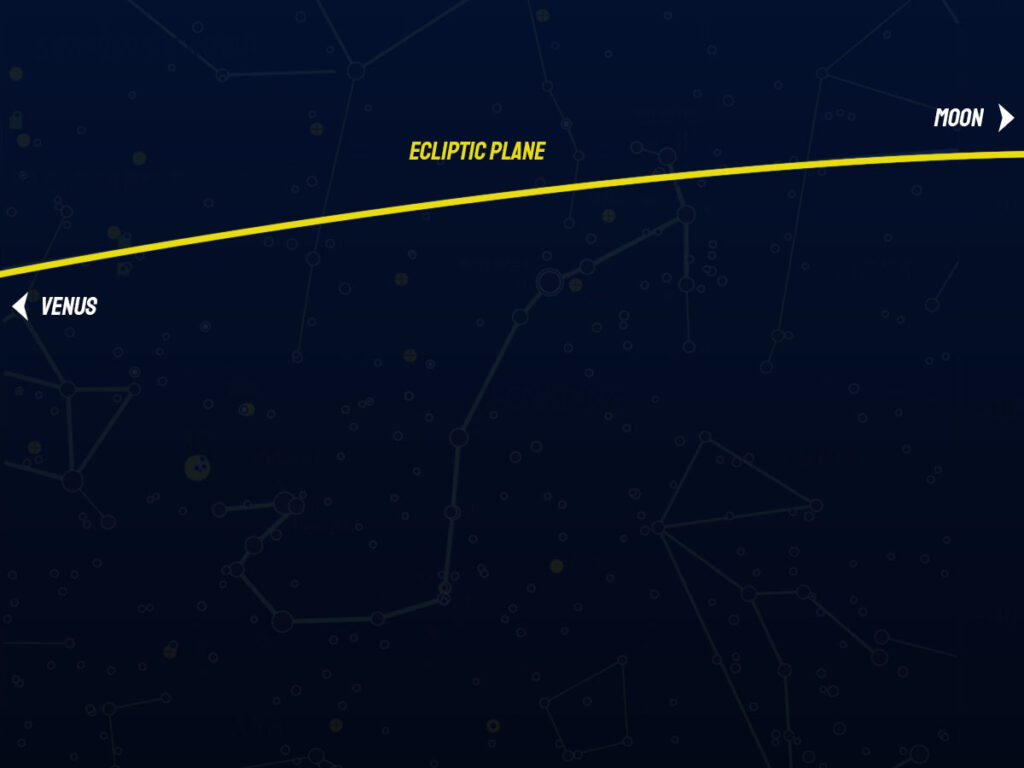
Step 2: Locate Antares
Antares is the brightest star in Scorpius and one of the 15 brightest stars we can see from Earth. It is one of the easiest stars to distinguish because it has a slight red color, which makes it really pop among other stars.
Thankfully, Antares is located right beside the ecliptic plane, so if you traced the imaginary line correctly in the previous step, you just need to follow it until you see Antares.
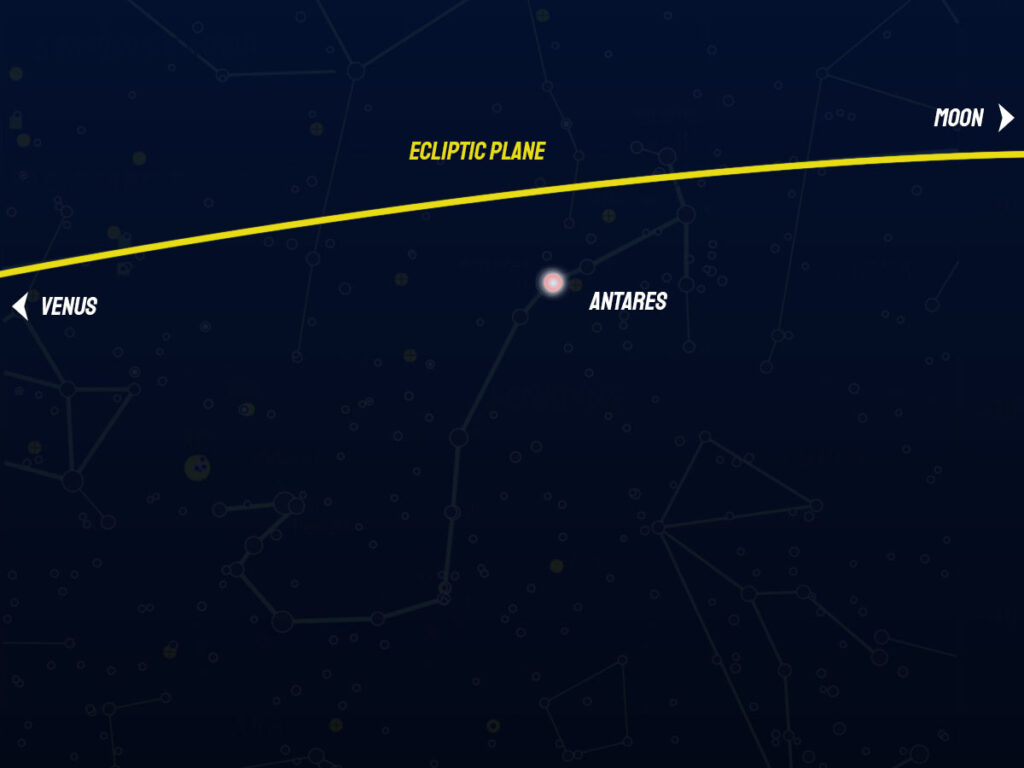
Step 3: Trace Scorpius’ hook
Antares is right at the heart of Scorpius, so once you find it, tracing the rest of the constellation is easy. The next feature you need to recognize is the hook that makes up the “tail” of the scorpion shape. Thankfully this is also relatively easy to distinguish because the stars that form it are a lot brighter than their neighbors.
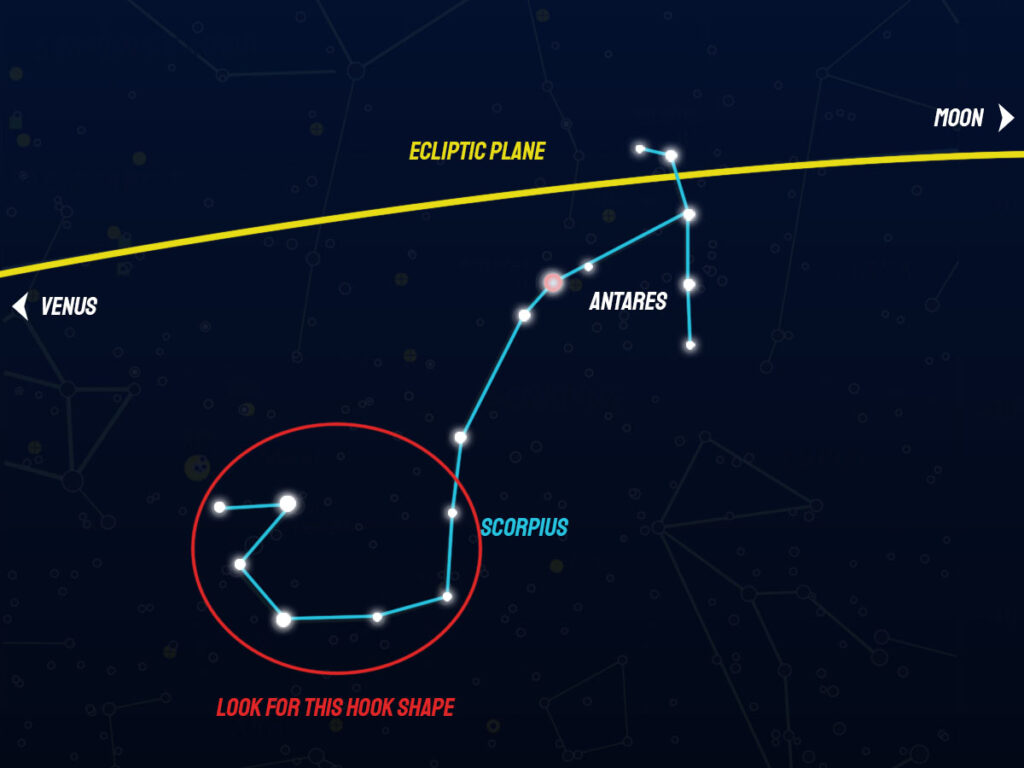
Tracing the shape of Scorpius
The shape of the Scorpius constellation is quite easy to recognize. The most common interpretation uses 18 stars to draw the shape of the scorpion.
You can split Scorpius into 3 main parts.
- The hook that makes up the tail. This is formed by stars such as Lambda Scorpii, also known as Shaula, which is the second brightest star in the constellation.
- The core or the body of the constellation is formed by Antares right in the middle of it. Antares is also known by its scientific name, Alpha Scorpii
- The head of the scorpion is drawn by a T-shaped group of stars with Delta Scorpii (4th brightest star in the constellation) in the center as the head.
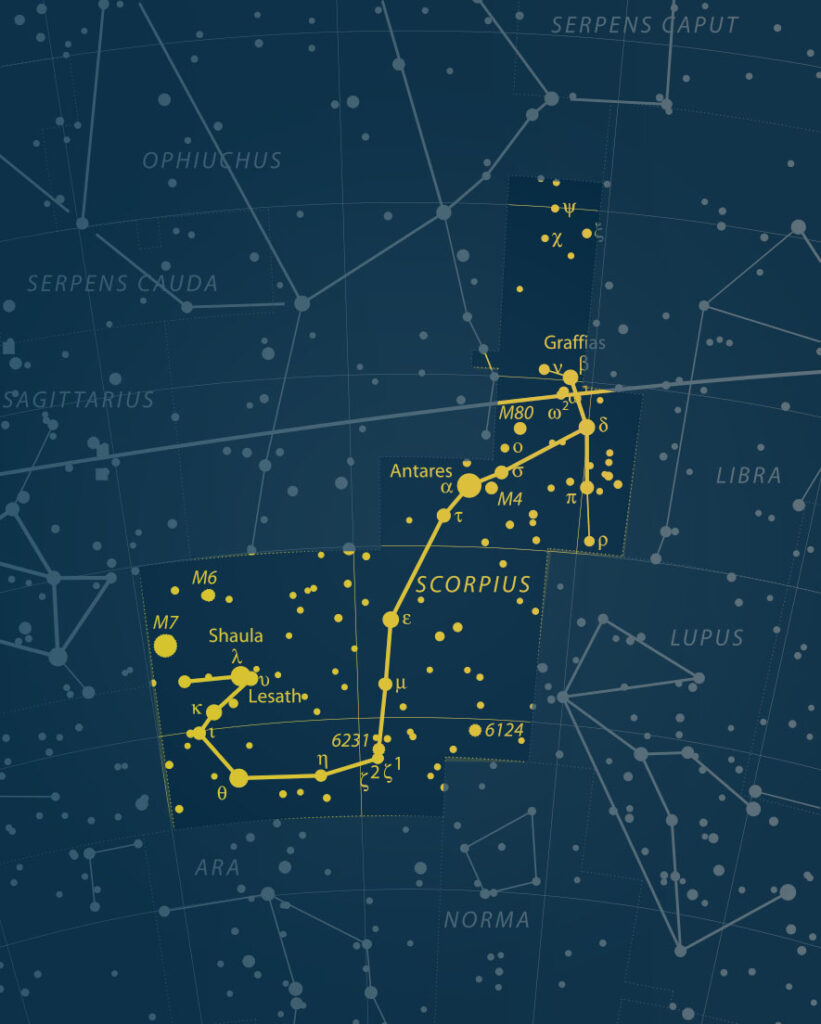
How to find more constellations
Aries – Taurus – Gemini – Cancer – Leo – Virgo – Libra – Scorpius – Saggitarius – Capricornus – Aquarius – Pisces
Enjoyed this article?
Get daily 10-minute PDFs about astronomy to read before bed!
Sign up for our upcoming micro-learning service where you will learn something new about space and beyond every day while winding down.

